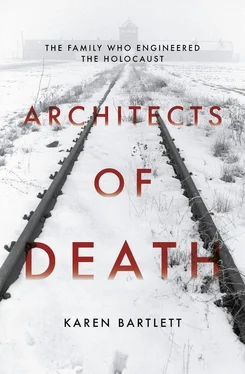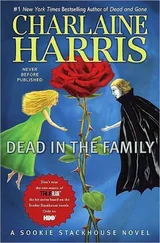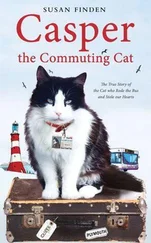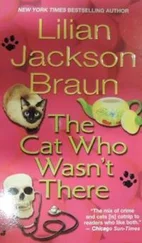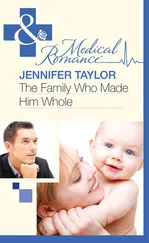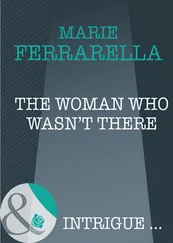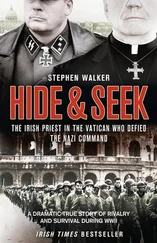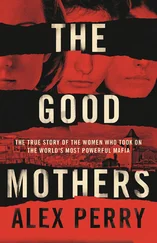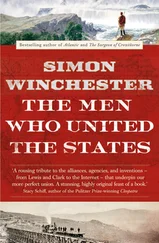Yet, for a German family of the time, Hartmut remembers his parents were also unusually open people – leaving their desk open with their chequebook and bank statements for Hartmut to look at.
Despite living in Berlin, the family made frequent trips back to Erfurt where they saw Hartmut’s grandmother Topf for the remaining few years of her life, as well as his mother’s parents who were originally from poor village families, but who had come to town to be tailors. Hartmut remembers his father adopting the role of little diplomat and peacemaker among his brother and sisters.
One of his sisters lived in the countryside where she had bought a strange house that looked a bit like a castle but was actually a folly built by a coffee importer. She lived with another woman, a painter. I think they were lesbians and sometimes they had terrible fights and my father would have to go down to help them get back together. My father was judge and jury in all the family quarrels.
This tendency of subservience to his siblings would play out most notably in Albert Topf’s relationship with his older brother, Hans.
Hans had been active in a German youth movement called Wandervogel , which translates as ‘wandering bird’. The aim of the group was to encourage young men and women to shake off the shackles of society and get back to nature and freedom. Unlike the boy scouts, the society had no uniform but encouraged hiking, playing folk songs and avoiding smoking or drinking. ‘I still have the songbook of this movement – the Zupfgeigenhansel ,’ Hartmut says. ‘It was deeply rooted in German tradition, fairy tales and music, and they played the guitar and sang a fantastic collection of German songs.’ Hartmut’s father, Albert, also joined the Wandervogel , practising craftwork and making lamps and toys from plywood. ‘That was my father’s philosophical background. They were a bit nationalist but not too much.’ The Wandervogel certainly stressed the spirit of adventure and Germany’s ‘Teutonic roots’, but also had many Jewish members. It was outlawed by the Nazis in 1933, along with other youth groups that were not part of the Hitler Youth – and Wandervogel members became both prominent supporters and opponents of the Third Reich. In the case of the Topf brothers, both became Nazi Party members, with Albert following the ideological lead of Hans.
My Uncle Hans was an engineer, a respected person – and a smoker. My parents did not smoke and my mother would always say: ‘Hans is smoking again!’ At Christmas he sang traditional Christmas songs, and my father, who thought religion was humbug, would mock him a bit behind his back. But Hans was the oldest brother and he liked to show off that he was a Nazi, and better than my father. He had children from his first marriage to the Reemtsma family, who were an established tobacco family, and then he’d married again to my Aunt Berta and had a step-daughter called Hanni who taught me piano.
Vividly, Hartmut recalls that Hans liked to show off his Nazi uniform.
My father didn’t have a uniform. Hans had a party uniform that he would wear at important events – he was silly like that – and he sometimes would tell me: ‘You don’t say “Guten Tag, Uncle Hans,” you say “Heil Hitler, Uncle Hans!”’ He showed off a bit about being a Nazi.
Hartmut believes that Hans encouraged his brother to become a Nazi, and although the records show that both men were ‘cell leaders’ (leaders of several blocks), Hartmut recalls that his father only ever reached the lowest rank of block leader.
Perhaps Hans encouraged my father to join the Nazi Party, because in Siemensstadt my father put a warning on his letterbox not to push in any newspapers or letters that would disturb the nesting birds. But in a letter that he wrote to my mother in Erfurt, my father complained that the Nazis were ‘so nasty’ they ignored his warning – and didn’t even care about the birds. That was my father’s reaction to the Nazis – they were nasty – yet later he became a member of the party. I don’t know exactly when he joined the party, but he did.
After building the house in Falkensee, Albert and Hans Topf were closer in both proximity and ideology – living only a few houses apart and connected through a special telephone line. During the air raids in the war, one family would ring the other and make sure everything was alright.
Uncle Hans had built his house earlier. It was a wooden house, and so the neighbours called us the ‘wooden Topf’ and the ‘stone Topf’, based on the type of house we lived in. In between us there was our Uncle Kurt, a friend of my father, who lived in his little house with his wife and son. So we were the children in the neighbourhood, and every family had a certain call or whistle in the evening when the children were supposed to come home. The Trumans simply shouted: ‘Doris! Gerda!’, when they wanted their girls to come home. An engineer whistled for his children, and they knew to listen out for that. My family had a tune that was whistled when it was time for us to come home. We were always playing outside and I remember my father would approach on his bicycle and ring his bell for us, which had two tones, bing-bong, bing-bong, bingbong. That sound remains a vivid memory for me.
Hartmut’s parents encouraged him to enjoy a carefree childhood; playing games and learning the piano with Hanni – but he was also a young boy growing up in the Third Reich and his adolescence would be shaped by the formative years he spent near wartime Berlin.
Before the war we heard that Hitler was coming through our neighbourhood, and my father went to a furniture shop to buy a folding table that you could sit on top of so that we could all climb on and see the Führer. I was quite excited because normally the Führer did not come to a place like Falkensee – and we got a glimpse of this big, mysterious, figure.
Once the war had started, like any young boy, Hartmut immersed himself in the adventures of battles and German heroes:
We collected postcards of all the military heroes who had earned distinctions for their service in the air force or in submarines – and we saw the bombers flying in big formations, and then we saw the strikes. At night the pilots made light marks for where to bomb, red or green, and then the other planes came and bombed. In Falkensee itself there were only a few bombs: one that destroyed two houses and left a big crater in the street, and another one that hit the house of a neighbour. It blew her arm off, which was left behind in the kitchen.
In the streets, Hartmut collected bomb splinters and traded them with his friends at school: ‘We’d say: “I’ve got a big one; this is a bronze one; this is only steel”, and so on.’
At Christmas time, Hartmut noticed that their traditional glass and ceramic ornaments were replaced each year by something of poorer quality, either pieces of decorated metal or even badges with war slogans on them.
While no one spoke openly about the dark side of life under the Nazis, ominous signs were there. Hartmut remembers that:
There was a man called Uncle Max. He was actually the uncle of a neighbour and he was a member of a police guard of a military airport. He had this fancy uniform, not the regular uniform – he looked like a forester, actually – and he called himself a Luftwaffe inspector. But really he was just the night guard of an airport. One day a boy from the neighbourhood told me a funny story, but told me not to repeat the joke, as Uncle Max had told him it would land you in a concentration camp. Then this boy explained to me the little that he knew from Uncle Max about what a concentration camp was.
The boy told Hartmut:
It’s a prison camp for our enemies. These enemies could be brutal robbers, murderers, or communists. The boy didn’t really have more details, but he knew that at least there was a distinction by the colour of their triangle, and they all had numbers like prisoners. That’s all he told me – but then I had an image that there are camps for those enemies that we don’t want to have with us.
Читать дальше
